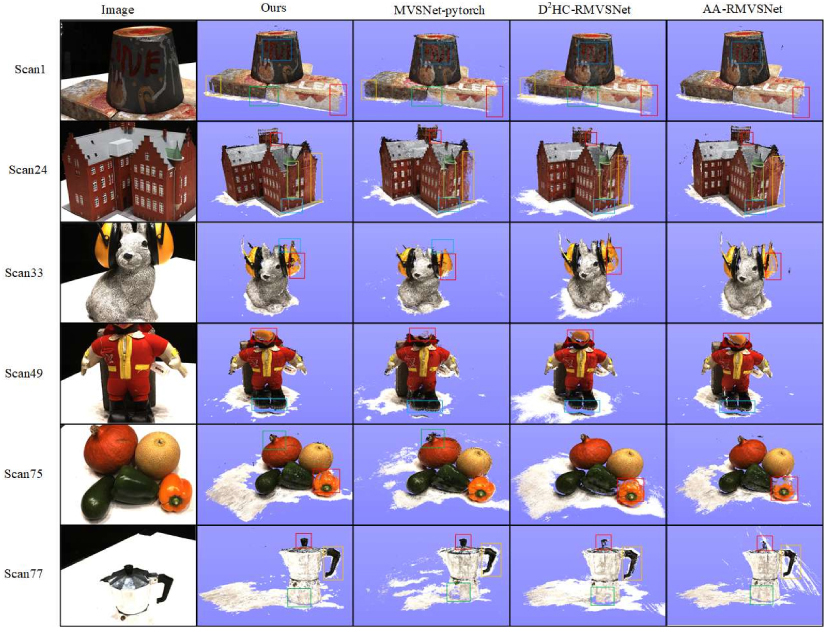
For solving the low completeness of scene reconstruction by existing methods in challenging areas such as weak texture, no texture, and non-diffuse reflection, this paper proposes a multiview stereo high-completeness network, which combined the light multiscale feature adaptive aggregation module (LightMFA2), SoftPool, and a sensitive global depth consistency checking method. In the proposed work, LightMFA2 is designed to adaptively learn critical information from the generated multiscale feature map, which can solve the troublesome problems of feature extraction in challenging areas. Furthermore, SoftPool is added to the regularization process to complete the downsampling of the 2D cost matching map, which reduces information redundancy, prevents the loss of useful information, and accelerates network computing. The purpose of the sensitive global depth consistency checking method is to filter the depth outliers. This method discards pixels with confidence less than 0.35 and uses the reprojection error calculation method to calculate the pixel reprojection error and depth reprojection error. The experimental results on the Technical University of Denmark dataset show that the proposed multiview stereo high-completeness 3D reconstruction network has significantly improved in terms of completeness and overall quality, with a completeness error of 0.2836 mm and an overall error of 0.3665 mm.

The exam of fetal well-being during routine prenatal care plays a crucial role in preventing pregnancy complications and reducing the risks of miscarriages, birth defects and other health problems. However, the conventional prenatal screening and diagnosis is conducted by medical professionals in a clinical environment, which is subject to certain limitations such as manpower, medical devices and location, time and cost of services, etc. This paper presents a new approach to detect and monitor fetal movement safely and reliably without any constrains of time, environment and cost. Unlike the conventional method, our contribution includes a novel soft sensor pad which can automatically detect fetal movement and uterine contraction nonintrusively and the robust data analysis software to monitor pregnancy health and screen abnormalities with quantitative assessment. The monitoring belt embedded with the soft sensor pad is wearable, non-intrusive, radiation free and washable. The new algorithms are robust for noise removal, feature extraction, time sequence data analysis and decision support to achieve personalized care. Both the design of soft sensor pad and functions of the belt are original and unique. The results of preliminary clinical trials demonstrate the feasibility and advantages of our prototype.